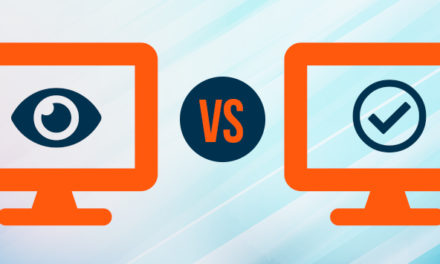Artificial intelligence – or AI – has come a long way. There was a time when the only reference we had was a movie made by Steven Spielberg. Autonomous vehicles would be a reference for others. Or, a vague idea of robots taking over the world. Today, AI technologies are more benign, with practical applications for healthcare professionals, resulting in cost savings and labor efficiencies.
What is Artificial Intelligence?
According to Investopedia, “Artificial intelligence (AI) refers to the simulation of human intelligence in machines that are programmed to think like humans and mimic their actions.” While that may draw our thoughts towards the aforementioned robots, it’s slightly more complex than that.
Over the past two years, artificial intelligence (AI) has made remarkable strides, revolutionizing various industries with its abilities and innovations. AI-powered tools now analyze vast amounts of data to provide more accurate diagnoses, recommendations and personalized plans. Machine learning algorithms can predict real-world events, track progress, and even suggest preventive measures, enhancing overall business outcomes. Natural Language Processing (NLP) chatbot models, popularized by OpenAI’s ChatGPT, have become a staple for quick and effective customer service.
The beauty of AI is that it is a concept put into play through the use of machines. Computer science developed AI to make it easier for humans to learn from data. However, it is designed only to mimic or simulate how humans think and what their actions may be. Ultimately, AI is not human, though, so there is always room for improvement with AI based decisions – that’s where machine learning comes in.
What is Machine Learning?
MIT Sloan explains that “Machine learning is behind chatbots and predictive text, language translation apps, the shows Netflix suggests to you, and how your social media feeds are presented.”
The simplest way to think about machine learning is likely by thinking about an algorithm. The example of Netflix is a solid one. Think about how the streaming app begins suggesting movies and TV shows you may like to watch. This happens after it starts to “learn” through your viewing.
So many components are taken into play when it comes to this type of machine learning. First, how much time you spend watching a particular show or genre. Second, your ratings of a film. Third, your saved selections. All of it feeds into an AI that gets “smarter” every time you tell Netflix yes, you’re still watching.
Machine learning (ML) models are similar to traditional AI algorithms in one regard: the “fuel” used to create them. The amount and size of data sets fed into the model by data scientists is key. When large amounts of data are passed into machine learning models, the predictive analytics become more accurate. This is why diverse data sets with a wide range of demographics are so important to ensuring accurate predictions.
Types of AI
AI has been around since American computer scientist John McCarthy first coined it in 1956. Since then, there has been a springboard of growth, particularly from 2005 to the present. We’ve seen the development of speech recognition, robotic process automation, super computer enhancements and more. Now, the variety of the types of AI solutions are plentiful:
- Purely reactive: this type of artificial intelligence has no memory or data and can only specialize in one area. This is considered “weak AI” (think chess video games).
- Limited memory: this AI system can collect previous data and continue adding it to its “memory”. It can begin making correct decisions despite having a limited reference point. Examples include recommendation algorithms for products and videos.
- Theory of mind: this AI understands thoughts, emotions and can interact socially. The most common examples in the modern day are AI chatbots powered by Natural Language Processing (NLP). Think ChatGPT and Google Bard.
- Self-aware: future interactions of this technology will be intelligent, sentient and conscious. This type of AI is also known as Artificial General Intelligence. There are no self-aware AI currently available, but companies such as OpenAI (developers of ChatGPT) are working towards a functional model.

The Applications of AI in Healthcare
AI can help in healthcare, and senior living, in the following ways:
- Enhancing surgical procedures through technology that offers a better outcome
- Managing Medicinal dosages and individualized treatment plans
- Providing diagnostic assistance
- Maintaining and tracking medical records
- Managing health insurance claims
- Managing medical product inventory, ensuring contract compliance with suppliers
- Optimizing labor spend and organizational efficiency
- And More!
Use Case Analysis – AI in Healthcare
One of the most significant applications of AI in healthcare is in diagnostics. Recommendation engines, trained on vast datasets of medical images and patient records, are now able to detect diseases with remarkable precision. For instance, AI-powered imaging tools are identifying early signs of conditions like cancer, cardiovascular diseases, and neurological disorders, often with greater accuracy than human experts. This early detection allows for timely intervention, significantly improving patient prognosis.
Personalized medicine is another area where AI and ML are making a substantial impact. By analyzing genetic information, lifestyle factors, and medical history, AI can predict which treatments will be most effective for individual patients. This approach moves away from the traditional one-size-fits-all model, offering tailored therapies that increase the chances of success and reduce the risk of adverse reactions.
Operational efficiency in healthcare facilities is also being transformed by AI. This not only reduces the burden on healthcare staff to complete a specific task, but also enhances the patient experience by minimizing wait times and ensuring the availability of necessary supplies and equipment.
By analyzing historical data and predicting future demand, AI systems can optimize inventory levels, ensuring that healthcare facilities have the right supplies at the right time without overstocking or understocking. This leads to significant cost savings and reduces waste, which is especially important in a sector where resource management is critical.
Moreover, AI enhances procurement by providing insights into spending patterns and supplier performance. Healthcare providers can use these insights to negotiate better terms with suppliers, identify cost-saving opportunities, and ensure they are getting the best value for their purchases. AI-powered analytics help in tracking and controlling expenses, enabling more transparent and accountable financial management.
AI-driven solutions are also enhancing patient monitoring and management. Wearable devices and remote monitoring systems equipped with AI capabilities continuously collect and analyze health data, providing real-time insights into a patient’s condition. This enables proactive management of chronic diseases, reduces hospital readmissions, and supports aging in place for elderly patients.
AI can become implemented as either a tool or software program. It is often designed to make a human employee’s life easier. It can serve as a virtual assistant, its own employee, as a recommendation system, or something more. AI can also cut down on human error through an organized system process that doesn’t get tired and is available 24/7. This is important for healthcare organizations that rely on accuracy and consistency for their patient care.
Why Does AI in Healthcare Matter?
AI healthcare solutions assist caregivers in their daily work to drive efficiency and savings. AI features provide better quality of life for patients and their families. The use of AI automation can help with that. Supply chain optimization, reduced labor, and automated customer service is achievable with the help of AI and machine learning.
These changes are evident in the customer service and nursing space. AI tools known as natural language processing (NLP) are already helping millions of patients and providers get answers. The most common NLP-powered feature is the chatbot. One of these tools can be seen on almost every healthcare provider homepage.
Direct Supply® DSSI™ has been ahead of the AI curve in healthcare procurement for the last decade. Our track record for successfully implementing AI technology is proven and trusted by many organizations nationwide. We were there before the explosion of AI in the workplace, and we’re here to help out with whatever needs you have in this ever-changing field. Reach out to a specialist today to learn more.
Reach out Now!
Contact us to learn how we can leverage AI to optimize your procurement.




